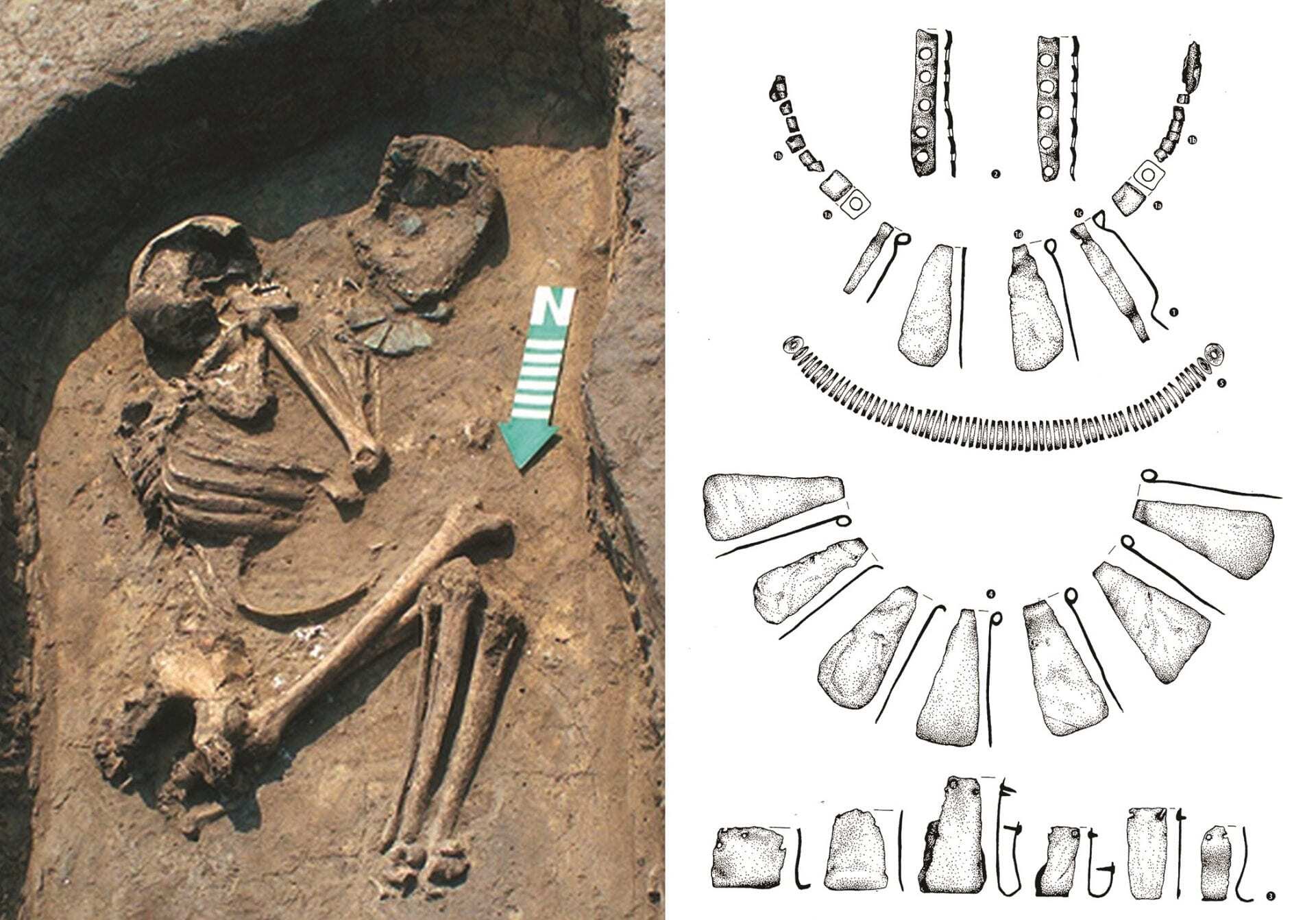An international team of archaeologists have discovered that a wealth gap existed in the Neolithic, around 6,600-years-ago.
At the town of Osłonki, in Poland, some people were buried with more valuable artefacts than others—including some of the first copper artefacts in Northern Europe. However, researchers were unsure whether this inequality in death translated into a wealth gap in life. Whilst such gaps have been established in other periods of history, this is not the case for the Neolithic.
The possibility remains that wealthy graves may reflect funerary donations to valued community members, so may not translate into an individuals wealth in life. To investigate this, Dr Chelsea Budd, from Umeå University in Sweden, and an international research team examined stable isotopes from different burials at Osłonki.
Stable isotopes are chemical elements incorporated into someone’s skeleton that vary based on their diet. “Initially, we were just interested in studying the food they ate to understand the development of farming in early prehistoric Europe.” said Dr Budd.
However, the results, published in the journal Antiquity, revealed that those buried with valuable beads and elaborate copper artefacts, do seem to have been wealthier in life as well as in death. Specifically, the isotopes indicate they likely had greater access to cattle from high-quality pastures.
“In the case of Osłonki, we can see that the presence of copper objects in some graves – an exotic material that would have been imported from great distance – is linked with differences in the diets during the lifetimes of these individuals,” said Prof Peter Bogucki, Princeton University, who was also involved in the research.
This research suggests that a real wealth gap existed in this ancient community over 6,000 years ago. Further, as farming land is often inherited, it raises the possibility that this inequality was multi-generational. The researchers speculate that early arrivals at Osłonki may have been able to claim the best pastures, keeping them in the family to create a longterm wealth gap in this community.
“We have uncovered some of the earliest evidence for a direct link between social status and long-term diet in prehistoric Europe,” said lead author Dr Budd. “We are witnessing the emergence of social and economic inequality in early prehistoric communities – the ‘haves’ and the ‘have nots’ – at a time much earlier than we thought.”
As many of the valuable grave goods were imported over long distances, with copper for these artefacts originating hundreds of kilometers away in south-central Europe, it seems this farming wealth translated into increased trading opportunities and material wealth as well.
The community at Osłonki lasted for around 200 years, during which time there was a rise in conflict that necessitated the construction of a defensive wall and ditch. Eventually, around 4,400 BC, the settlement was abandoned, along with many others in the region.
This regional collapse also saw a break down in the trade networks that introduced the valuable items into Northern Europe, with copper ornaments not seen again for a millennium. As such, this site provides not just insight into the ancient history of inequality, but the precarious nature of wealth. Read the full article: https://doi.org/10.15184.aqy.2020.aqy
Header Image Credit : Antiquity





